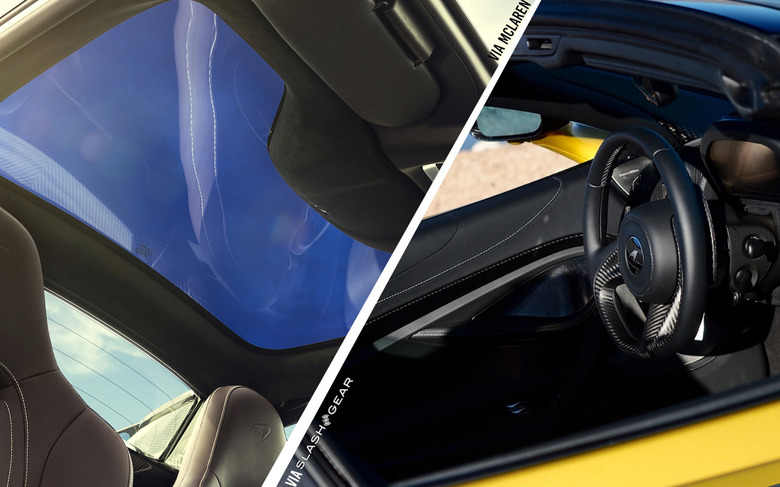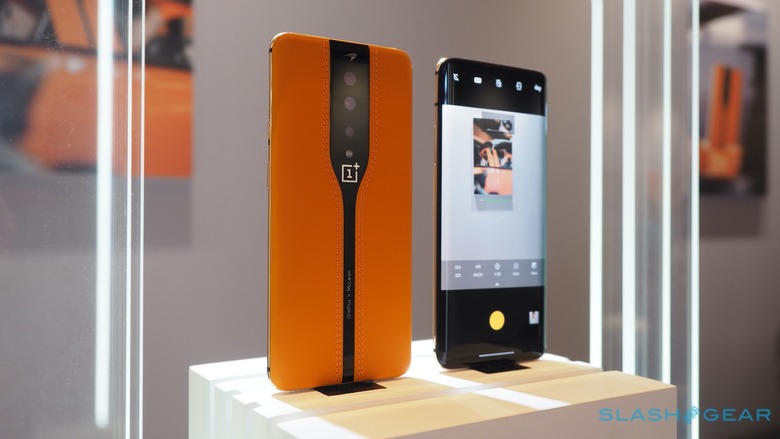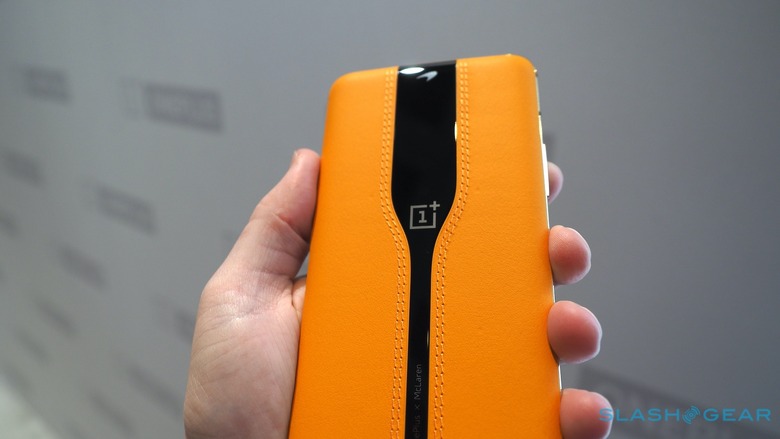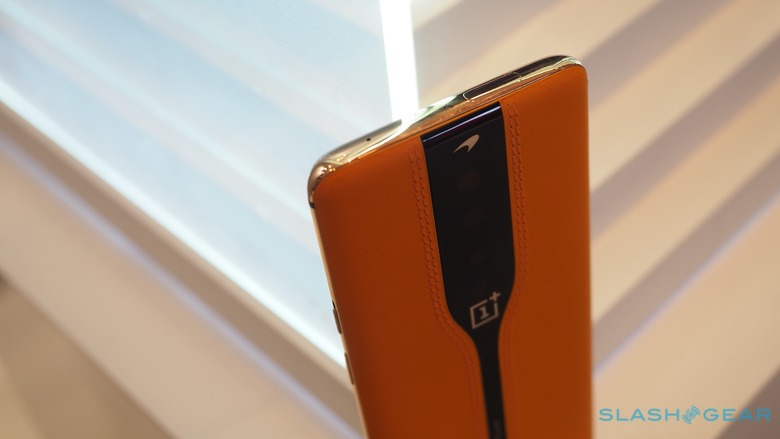Now I Understand Why The OnePlus Concept One Exists
The OnePlus Concept One hides its magic well. Indeed, you'd be hard-pressed at first glance to spot that the technology OnePlus developed for its new concept smartphone at CES 2020 started development eighteen months ago, the Android phone-maker once again taking McLaren's supercars as its inspiration. Only this time around, it's not just a fancy color scheme.
There's one of those, certainly. Most of the back of the Concept One is clad in the automaker's eye-searing orange leather, the same hide (and hue) that you'd find inside supercars like the McLaren 720S. It looks and feels great, with all the stitch detailing you'd expect, though I can't help but wish that it was the 720S' Alcantara that had made it to the OnePlus' rear.

Snaking down the center of those two leather panels, like half an hourglass, is a slender pane of glass. It's deceptively simple, but that black sliver is what gave OnePlus engineers their sleepless nights.
It's electrochromic glass, which basically means that it can go from being opaque to transparent depending on an electrical charge being passed through. McLaren offers the technology on the glass roof of its 720S, in fact: you can dim it when you want shade in the cabin, or make it transparent when you'd rather see the sky. Problem was, OnePlus couldn't just borrow a piece from the car company.

McLaren's version of the glass is thick: after all, it needs to withstand errant rocks and inclement weather, not to mention survive crash testing. In fact it's probably not far off the overall thickness of the Concept One itself. OnePlus needed a much thinner version it could layer over the multi-camera array.
Clearly (pun intended) they succeeded. When the Concept One is locked, or you're using apps other than the camera, the electrochromic glass is black. You can just about see the circular shapes of the lenses underneath, but you have to be looking at just the right angle, and up close.

Tap the camera app, and in a split-second the panel turns clear. Because OnePlus can operate it in levels, too, it can also apply it as a makeshift ND filter, helping cut over-exposure in brighter or mixed brightness scenes. Flip to the front-facing camera – which pops out of the top – and the panel blacks out again.
Like I said, it's deceptively simple. OnePlus is still refining the technology: it may look production-ready, as does the Concept One overall, but it's not quite ready for mass production. Still, the company is excited about the possibilities, which include larger panels of the glass or, indeed, making smaller, custom shapes like an individual lens for a camera. Get the latter right, and you could have different filters for, say, the ultra-wide versus the telephoto lens. Better still, OnePlus tells me that there's no real power impact from the system.
I confess, at first I was a little unclear why OnePlus was doing all this. The roof in the McLaren makes sense: you get the benefits of both a transparent and a shaded roof, but without the moving parts that can slow down supercars. The argument for a phone, though, is a little less clear.
Listen to OnePlus, and it feels like there are a few reasons, varying on the scale of practicality to "well it just feels nice." On the one hand, yes, you can add different filters to the camera, and that addresses a common complaint about smartphone photography. On the other, why not have a sleeker device when you can, and only expose the complexity when it's actually needed?

Where you stand on that argument depends on how much you consider a reasonable price for a smartphone, and how big an emphasis you place on aesthetics. While the Concept One may feel like a frippery on one hand, I can't really fault OnePlus for wanting to dig into engineering and make something cleverer for the sheer fact that you can. After all, nobody ever said a supercar was a necessary item, but that doesn't make them any less appealing.
